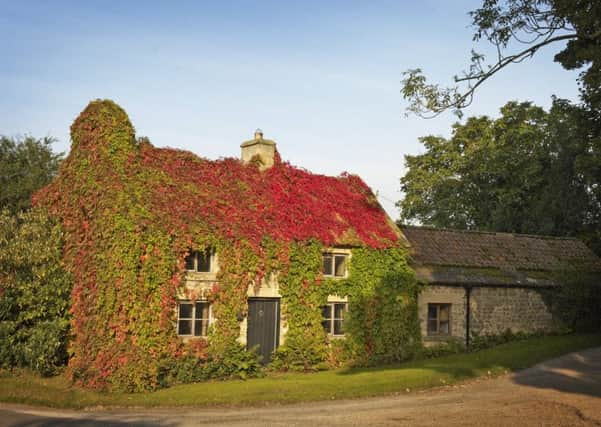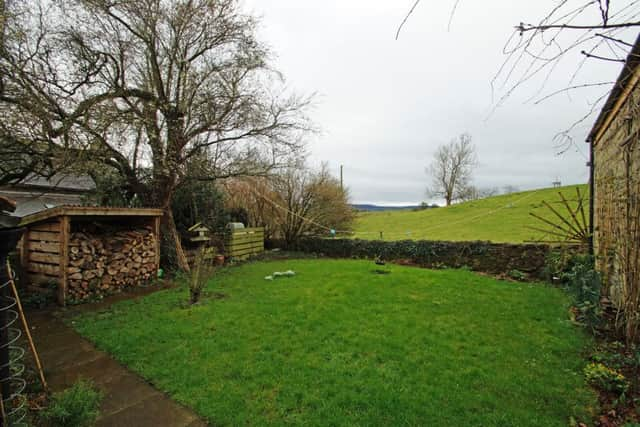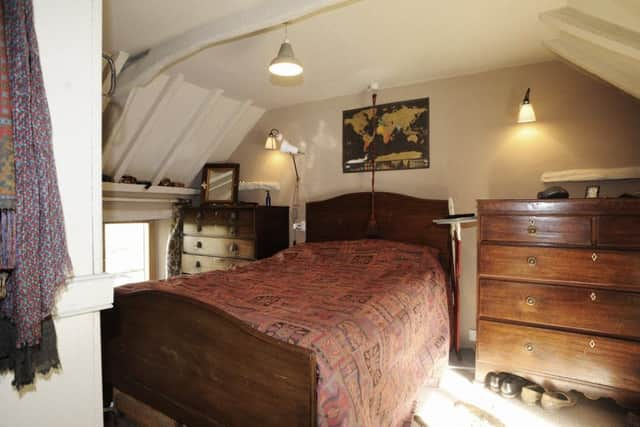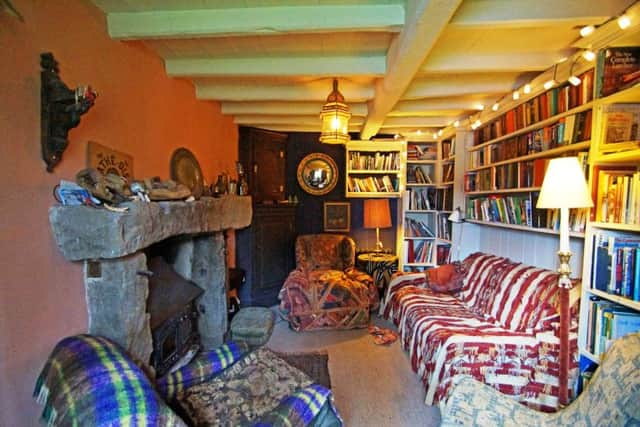Jeepers creeper, cottage covered in red leaf


Passers-by often stop to stare at Duxey Cottage, especially in autumn when the house is a mass of russet red leaves.
The historic former coaching inn is completely covered in Virginia creeper and has been for decades with no detrimental effect.
Advertisement
Hide AdAdvertisement
Hide AdThe property’s owner, Mark Broadwith, is keen to stress the benign nature of Parthenocissus quinquefolia to prospective buyers. He has just put his idyllic rural home in Rookwith, near Leyburn, on the market for £350,000 with Robin Jessop.


“It was actually one of the selling points when I bought the house. I thought it looked fabulous. I checked to see if it was an issue for the building but the walls were fine. It attaches via little tendrils so it doesn’t disrupt the masonry,” says Mark. “When it came to replacing the roof, I was amazed to find that it rolled back just like a carpet. The only thing I am careful of is allowing it to grow into the eaves and under the roof tiles.”
The Virginia creeper is thought to have been planted by previous owner Sholto Shaw in the 1960s. A gardener, he is said to have brought the cutting back from the Jervaulx estate, where he was working. The deciduous climber has since been photographed many times by those who love the spectacle of the cottage covered in a leafy red cloak.
Mark bought the property at auction 27 years ago when facilities were rudimentary. There was no bathroom, just a tin bath in front of the old range and an outdoor earth closet. Running water came from a well across the road.
Advertisement
Hide AdAdvertisement
Hide AdThe house, thought to date from the early 1600s, now has three bedrooms and two bathrooms and has been sensitively renovated to preserve its historic features. Mark also turned a tumbledown annexe into a contemporary living space. Outside, there is a detached stone barn with development potential, an orchard and a garden overlooking Wensleydale countryside.


Mark is selling the cottage, which sits between Leyburn, Masham and Bedale and is close to the A1, to pursue an ambition of renovating another property with land for horses. “I’ll miss it as it is in a particularly pretty spot and I have put my heart and soul into this place,” he says. “I hope whoever buys it keeps the creeper. It’s part of the cottage’s identity.”
David Hornsby, a Yorkshire-based building conservation surveyor, who specialises in surveys on historic and listed houses, says there has been much debate over the years as to whether creeping plants cause damage to property.
“There is something quintessentially British about creeping plants attached to walls, whether this is ivy, wisteria, Virginia creeper or honeysuckle. I think they can add to the character and improve the aesthetic value of a house in the right circumstances and subject to proper maintenance of plant and building. They are often used to cover unsightly past alterations and extensions. particularly on farmhouses and country houses.”
Advertisement
Hide AdAdvertisement
Hide AdIn the plants’ defence, he points to research undertaken by Historic England in conjunction with Oxford University and the National Trust. It concluded that many of the negative perceived problems with Virginia creeper and ivy were myth. The study showed that the leaves act as a “thermal shield”, insulating brickwork from extremes of temperature and moisture that often cause cracks. They can also protect against pollution damage.


However, although creepers are a boon for buildings that are well maintained, the research shows that ivy can find its way into cracks and holes in damaged properties. David Hornsby says: “I’ve seen examples where the ivy root at ground level has become embedded in the wall and has caused movement and cracking. I’ve also seen a case where ivy was allowed to creep over walls in poor condition and it caused damage in soft mortar joints. It is important to consider each property on its individual circumstances.”
*For details on Duxey Cottage, contact Robin Jessop tel: 01969 622800, www.robinjessop.co.uk. David Hornsby, historic and listed buildings surveyor, www.surveysbydavidhornsby.co.uk